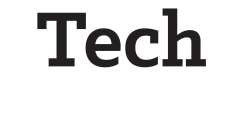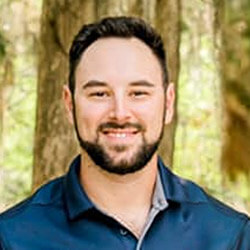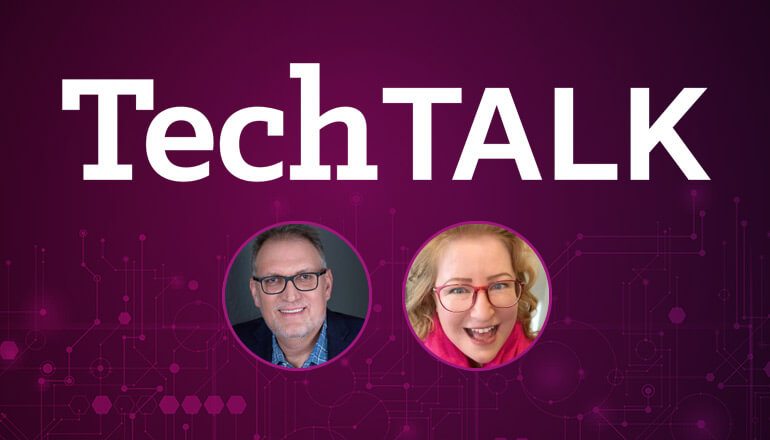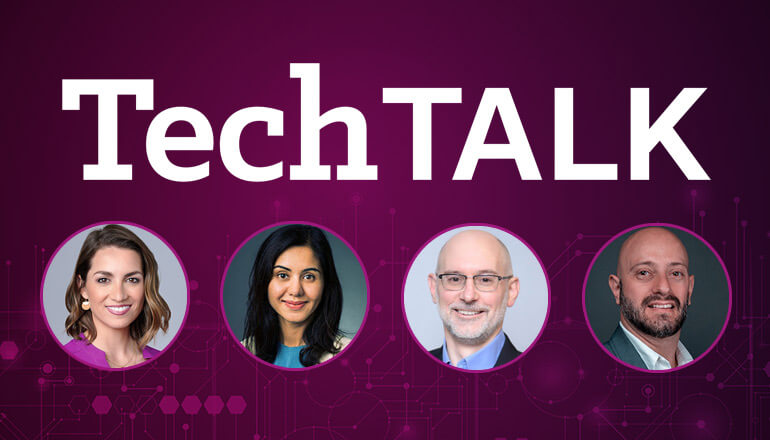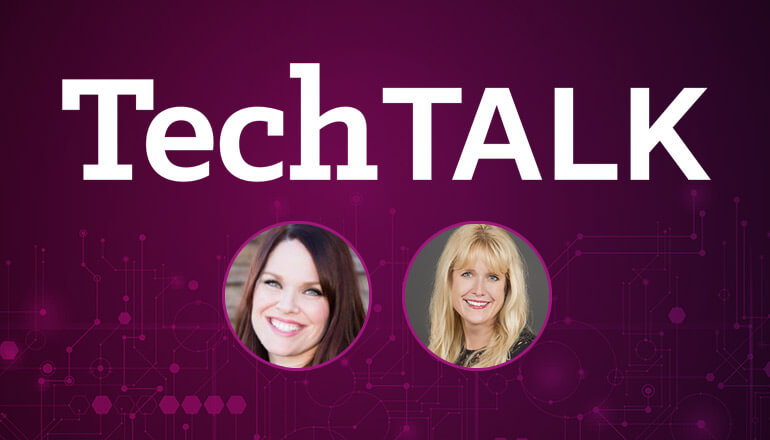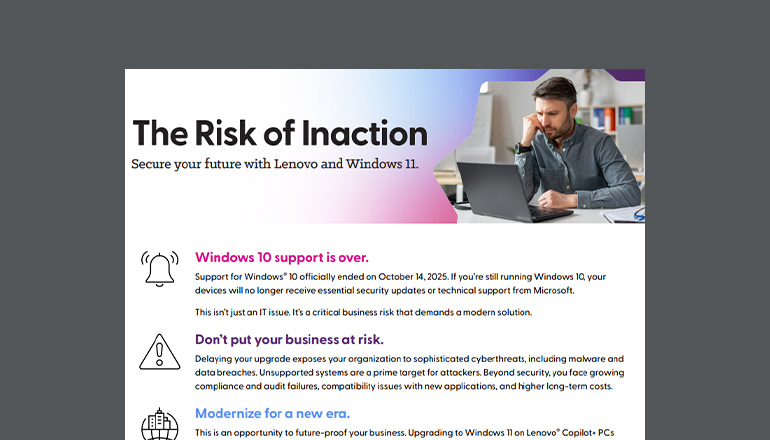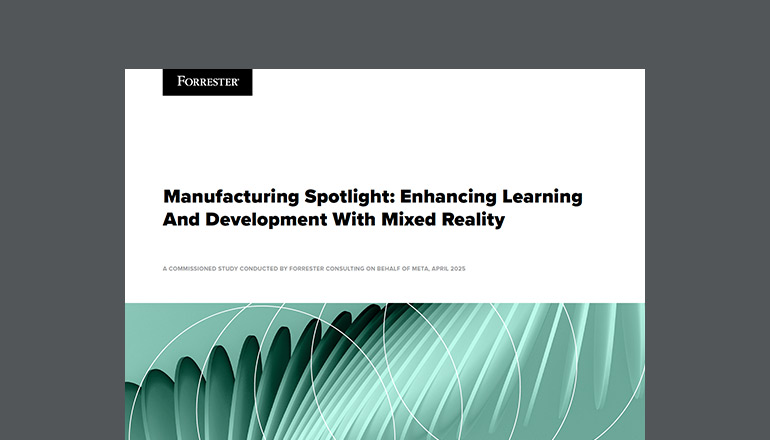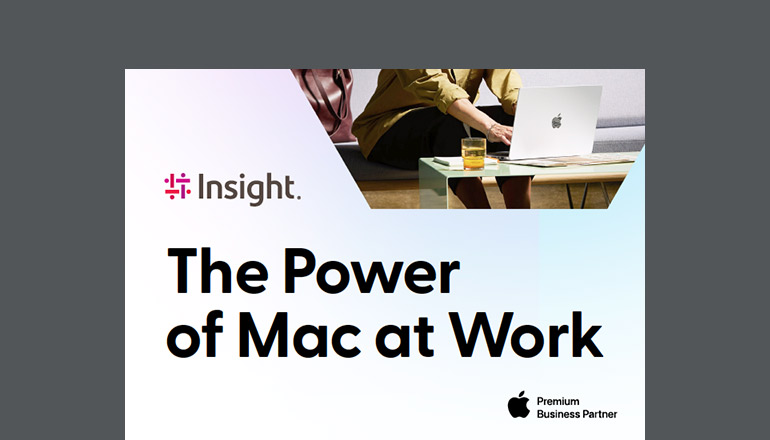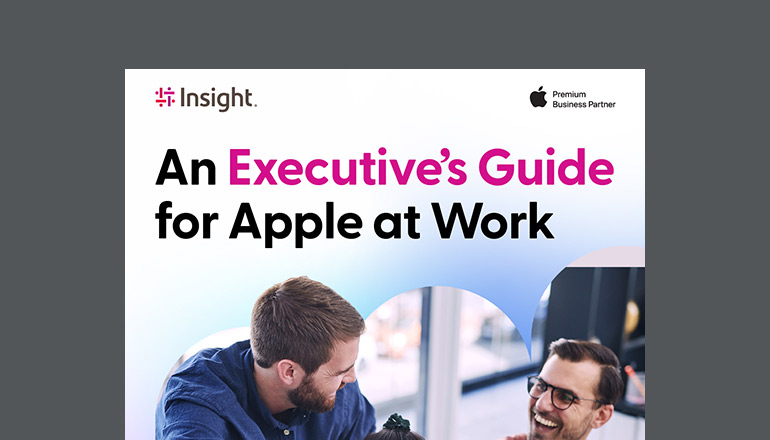Audio transcript:
Revolutionizing Distributed Collaboration with Augmented Reality
Published March 31, 2021
MATT
Hello, and thanks for joining us for another Insight TechTalk. I'm Matt Fedorovich, lead for Immersive Technology here at Insight. I'm joined by our guest, Jacob Lowenstein, head of business at Spatial, cutting edge solution that's transforming the way teams work together.
When people hear the words VR or AR they often think about gaming, but there's an entire world of possibilities that we're seeing come to life in a virtual world. Teams are collaborating like never before with software like Spatial that run on devices like the Microsoft HoloLens. And in today's at Tech Talk, we're going to focus on enterprise adoption of virtual or remote collaboration.
So, Jacob, tell us a little bit more about Spatial. What is Spatial exactly?
JACOB
Sure. So Spatial is kind of like a 3D Microsoft teams or like a 3D Zoom meets Slack. So, the problem we solve, is the problem of distributed collaboration, right? Like how do you enable people all over the world, teams separated all over the world, to work together as if they're in the same room? How do we enable them to build that deep connection so that they feel like they're part of a collective whole and that they trust one another? And how do we allow them to go beyond the little 2D tiles and video chat to actually do things together? That's what Spatial does.
So, you create a lifelike avatar from a single selfie, in five seconds you have a version of you that literally looks like you and with the headset actually behaves like you do, you move your hands it moves its hands. You can bring in any 2D or 3D information even sharing your screen to basically fill your whole room with information and annotate it and modify it. And we integrate with how you already work. So, we have deep integration with Microsoft 365, Slack, Figma Google Drive all your favorite collaboration tools. And of course we're super cross platform. So, when you want to work in AR use the (indistinct). When you want to work in VR, you could use a Quest 2 or even we work in web or on iOS and Android. So really this is all interoperable. So, you can join from any device and this could easily scale within your organization.
MATT
Yeah. That's awesome. And Spatial says your room is your monitor and your hands are the mouse. Tell us what that means.
JACOB
Well, so I mean, it's so funny because like when we were trying to figure out like how to teach people about what Spatial does, we realize like a lot of people haven't tried VR and AR. So, like how do you explain that to someone that's never had the experience? And we realized that like the biggest, like “aha” moment that people have is like, when they're working on a computer and they're using their keyboard, people feel very constrained by that, right? Like there's only so much information you can work on. It doesn't feel like you could access things anywhere when you're looking at people there are these little 2D tiles on your screen.
And when you're in AR or VR or MR, I guess as Microsoft says it, like suddenly your whole room is the monitor. So, you could work on a lot more information at once because you can literally fill your physical space with information. There's no learning curve for figuring out how to interact with information because there's hand tracking. So, I can literally grab things and move them around and interact with it very intuitively. There's things like voice detects, so when I want to type something I just say it. So suddenly we've turned this computer from this like very limited, small real estate thing that I have to learn how to use, and we basically are making your real world feel like this natural computer. And that's what Spatial does.
And so, our moniker is how work should be, how work should be. And we say that because we really do feel like the experience of working in Spatial feels like this transformative moment and how work should be versus kind of all the friction filled ways that, you know, work is today.
MATT
Yeah, that's awesome. And how did Spatial get started?
JACOB
So interesting story. So, we are founded by the two leading free interface designers in the world, Anand and Jinha. They both actually gave Ted Talks about six or seven years apart. Anand gave a Ted Talk in ‘07 about BumpTop, which was his first startup. And he sold that startup to Google and worked at Google as a PM on several big products for a while. And then Jinha was a PhD at MIT and he built something called SpaceTop which was actually the world's first holographic computer. I mean, literally a computer you could reach inside and interact with holograms and that was in 2013. Jinha ended up getting ranked by fast company as one of the world's greatest living designers and went on to become the lead interface designer for Samsung TVs globally. So, Anand goes to Google. Jinha goes to Samsung. They become really close through these like Ted Talks and this Ted network. And then in 2016, Jinha had all these job offers from like every major company to go lead VR/AR groups, but Anand convinced him to go start experimenting with him and found their own thing in VR and AR.
And so, they did a bunch of experiments because they felt like in 2016 VR and AR, AR and VR, MR it was very gimmicky. Like it was a lot of cool demos, but it wasn't anything that was truly useful. Like what is AR, VR actually good for that I can already do with my laptop or my phone or even my hands, right? So, we really wanted to only do something in the space if it meaningfully did something better than some other competitive solution. And they built this app called Scuba which was basically the social TV watching app with really crappy avatars. And the app itself was not great but when they had the very small team at time do meetings in Scuba they said, "Huh this feels like, even though we don't look like each other, we feel like we're really there." "Like let's lean into that." And that was the “aha” moment.
So that was kind of in 2017. From 2017 to 2019 they worked and settled on this problem of distributed work to actually turn Spatial into this collaboration solution it is today. 2017 raised the first money a seed round. And since then, we've raised our Series A came out of stealth in 2019 and we've been off to the races.
MATT
Yeah, that's awesome. Yeah Spatial really has been taking off. And speaking of taking off, a lot of our technology we work with has been really taking off during this pandemic and everything around remote work. Do you think that you think that, do you think basically that remote work is going to continue post pandemic and the tools that we're building today are going to be utilized more and more?
JACOB
A hundred percent. And it's not because I believe that, it's just because that's what our partners are saying, right? So, if like you look at the news and you see that companies like Microsoft or Salesforce are saying that huge swaths of their workforce are going to be not just allowed but sort of encouraged to work remotely permanently, I think what we're recognizing is that things are not going to back to the way they were before. I think there was a hope that like needles go in the arm, everyone goes back to the office and we forget 2020 and half of 2021 ever happened. And that's not the reality. The reality is like the whole world was forced into this giant work from home experiment. And in many ways it worked. I mean there was friction to it, but it worked, right? And so, what are the two big things that people learned?
One, a lot of people like working remotely. Not all the time but at least for some of the time.
And two, if you robustly support remote and distributed work, it means you can hire the best talent from anywhere in the world instead of just from one locale or force people to relocate to that place.
So, what does this mean in practical terms? It means the biggest companies in the world are going to be hybrid once COVID's over. So, people that are local are probably not going to go into the office every day. I would suspect it's going to be something like one to three times a week. And they're going to be increasingly encouraging or allowing their existing workforce to move wherever they want and hiring people from anywhere. And so, when your true workforce now is spread all over the place, how do you allow people to feel like they're part of this one collective organization when all they're going to feel like is little tiles on a screen for most of the time? And so Spatial is really ready to solve that problem and we're already doing so today.
MATT
Yeah. So, tell me more about that. Tell me a like one really good use case for Spatial and where it's being used today.
JACOB
Yeah, a hundred percent. So, today we work with, you know, big, some of the biggest companies in the world. We work with like Pfizer and we work with NL you know, a huge utility company. We work with Matel.
I'll talk about Pfizer for a second, who uses this to basically do their stand-up meetings and their executive leadership team meetings. So, they literally have their most senior people at the company jump in a boardroom, a war room of information that has everything they need to review and then just have their standup to do their planning. This happens both at like the ELT level where they're doing quarterly planning but it also happens at lower levels too where I can throw up a giant screen of my notion or my Kanban board. I could literally have one person wearing a hollow lens assigned on their computer to like move things around and take the tasks. And then we can also review the work in real time in 3D together as we re-arranged who's responsible for what. So those day-to-day team meetings are critical.
Another really interesting use case just very quickly is a Laval, which is, you know basically a data intelligence company selling to life science companies. They've basically given devices to everyone at their company, and they do all their meetings at Spatial. So, not only is this even for a specific use case but even just for basic meetings where people don't you know, they're not engaged, they're checking their phone, they don't feel like they're together. You know, say you want to just have your one-hour standup a day where you just jump in a headset Spatial starts immediately and you feel like you're all altogether. The impact that can have on your organization is transformative. Not just because you can work on more information together, not just 'cause you can work on it together intuitively in 3D, but because it feels like you're really together and that lizard part of your brain, the one that's responsible for the love, that's what fires up and makes you feel really connected with your colleagues and willing to trust them and willing to communicate that much more with them.
MATT
Yeah, totally. And yeah. Spatial is a great tool for that. And speaking of as it's a tool and it's being built even more, what are some of the really cool features potentially you could tell us that are coming to Spatial in near future as it builds out even more?
JACOB
I'm happy to give you a little preview, just keep it on the D-L. (laughs) So, we just want some super cool features. So, in version 2.0 which came out a couple of weeks ago, we launched the ability to use like an iPhone 12 or an iPad to use the LiDAR, or true depth sensor, to literally scan your space or scan objects live into Spatial. So, imagine you are building something, and you want it to compare the design to the real-life thing you built, take the design, scan the thing you built and it uploads right into Spatial. That was pretty crazy. People went pretty wild for that.
We also just recently launched host tools where one person can act as an admin for the whole meeting and control who can talk, who could upload content, who can move things around so you can make the whole experience very orderly.
In the near term, we're going to be launching some super exciting editions. So, one big thing we're launching is the ability to upload a fully immersive 3D environment, almost like a digital twin that you feel like you're literally inside. So that's a really big deal. And our expectation is that later on in the year we're going to also add Azure Remote Rendering that so we're talking about not just uploading 3D environments but uploading like insanely complex 3D environments that you could walk through. So that's one really exciting preview that's coming up. We're also offering the ability to locally cast your screen. So, imagine you want to work in a (indistinct) but have multiple screens in front of you or a giant screen that you can work on and just to look at that much more information, you can do that now in Spatial with zero latency. Just broadcast right over your local network. And then lastly, the last two things I'll say is, we're releasing a new web version that's fully interactive. So, you'll literally be able to just send a link and if someone doesn't have a headset they can just join right in their web browser with an avatar and can fully interact and participate in the meeting. So, it'll make scaling that much easier. People don't need to install anything within your organization. And we're exploring some really interesting content export integrations such as an integration with Miro where you can basically take the content that you were working on in Spatial and not just export it into like a CSV file, but if you wanted to export it back into collaboration tools you're using like Miro so you can keep working even out of AR and VR on what you were doing. So again, Spatial is designed to really integrate with what you're already doing. It's not some new way of working. It's just a way to upgrade how you're already working.
MATT
Yeah, that's awesome. And hey, thank you so much for joining us today and giving us a little preview and telling us more about Spatial and transformation and collaboration and everything. You know, I think everybody can contact you or get ahold of Spatial at spatial.io. And then you can contact us here at Insight at Hololens@insight.com or immersive@insight.com. Jacob and I work really closely together in the space. So, it's been great to hear about all this. Again, thank you again. And we'll talk to you next time within our TechTalk.
JACOB
And if I can have the last word, 'cause my mom always says Jacob needs to have the last word. (laughs) Now when you go to our website you can sign up for accounts for free. So, we have a free version that anyone can try. So, it's super easy to get this, you know, in trial with any customers or anyone you might be working with. And we're available as mentioned in web and on iOS and Android. So even if someone doesn't have a headset yet you can always give them a preview on those devices. It's a great way to give them a taste before they get the incredible HoloLens and to actually experience it in all of its majesty. Yeah. So, me and Matt, we love you, Insight. You're an incredible partner and let's keep doing big things together.
MATT
Yeah. Thank you again.
[Music]
